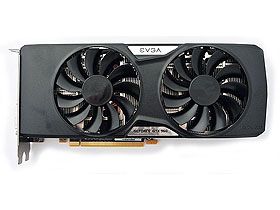Early Verdict
The EVGA Geforce GTX 960 SuperSC is an excellent GeForce GTX 960 specimen. With very high factory clockspeeds, headroom for even more, excellent cooling capacity, low power draw, and nearly silent operation, this card has massive appeal. It would be an excellent option for any gamer who values the sweet spot in price/performance ratios above all else.
Pros
- +
Very fast out of the box overclock. Excellent cooling capacity. Virtually silent operation. Dual bios toggle switch.
Cons
- -
Stock fan profile leaves GPU to cool down passively after a heavy load.
Why you can trust Tom's Hardware
Closer Look
It’s been nearly a year since the first Maxwell-based product launched. Ever since then, enthusiasts shopping for $200-$300 graphics cards have anticipated their chance to enjoy the architecture's benefits. The wait is finally over, and Nvidia's board partners are fighting for your hard-earned dollars. EVGA went aggressive with the introduction of its GeForce GTX 960 SuperSuperClocked (abbreviated SSC) on the GM206 GPU's launch day.
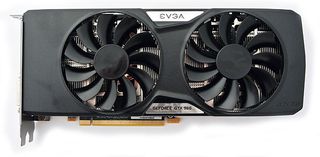
While GTX 960 SSC might sound like a silly designation, don’t be fooled; this card sports serious specs. Boasting a factory base clock of 1279MHz and a rated GPU Boost frequency of 1342MHz, paired with 2GB of GDDR5 clocked at 7010 MT/s, EVGA’s GTX 960 SSC promises to be one of the quickest 960s available.
It's built on a 110mm-tall all-black PCB measuring 257mm in length. Those dimensions are somewhat longer than most of the cards in this price range, but still shorter than many competing cards. At 691 grams, this isn't the lightest card around. And it's far from the heaviest, too. You shouldn’t have too much trouble fitting EVGA's board into a majority of cases.
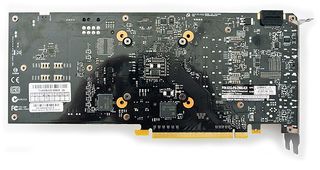
The thermal solution, as you can see, is EVGA’s dual-fan ACX cooler, which has been around for several iterations and continues receiving refinements. This new ACX 2.0+ version includes a MOSFET cooling plate and three 8mm straight heat pipes. EVGA claims these changes reduce temperatures by 11 and 5 °C to the MOSFET and GPU, respectively. The fans are also updated with swept blades, double ball bearings and lower-power motors. This is a combination that purportedly results in more air flow, better heat dissipation and less power draw. In addition, the fans only kick in at 60 °C, leaving the card passively cooled at idle.
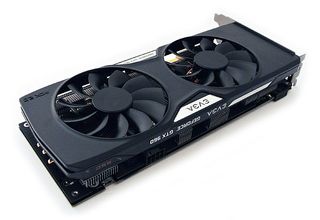

If you have no need for silence and prefer to keep the fans running, there is a secondary BIOS that can be invoked with a toggle switch on the card's top edge, near the power plug. The second BIOS has a different fan profile called low RPM mode, which spins at all times.

EVGA put a lot of effort into the SSC's power delivery, implementing what it calls optimized power target technology to balance between heat, power and performance. The company claims it can use 33% more power than the reference GeForce GTX 960 design from Nvidia. To guarantee stable delivery, an eight-pin auxiliary connector is used rather than the usual six-pin connector.

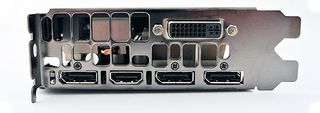
On the back of the card, there are three DisplayPort interfaces, one DVI port and an HDMI output. Up to four outputs can be used at any given time, though bear in mind that this is a mainstream board best suited to gaming at 1920x1080.
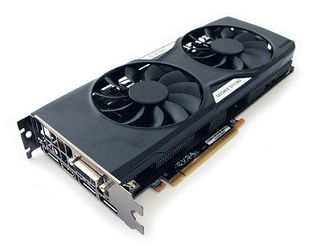
The card comes in a hard plastic clamshell. There is a DVI-to-VGA adapter, a dual-six-pin-to-eight-pin power adapter, a poster, some stickers, an advertisement for EVGA power supplies, a marketing slip about the new fans, a warning page stating that the fans only turn on when needed, a quick install guide, a full user manual and a software disc. What else could you possibly need?
Kevin Carbotte is a contributing writer for Tom's Hardware who primarily covers VR and AR hardware. He has been writing for us for more than four years.
-
damric Worth every penny except that it is slower and more expensive than the R9 280.Reply
http://www.3dmark.com/fs/3790264 -
Derek Furst ReplyWorth every penny except that it is slower and more expensive than the R9 280.
intel hd4000 is better than a gtx 980. See, i can say things that aren't true as well. Not only is the 960 the SAME price on newegg, it comes with the witcher 3 (a 60 dollar game i was going to buy already) and on passmark, the r9 280 only scored like a 4100 something while the 960 scores 5980.
http://www.3dmark.com/fs/3790264
-
damric You don't have to use newegg.Reply
PCPartPicker part list / Price breakdown by merchant
Video Card: XFX Radeon R9 280 3GB Double Dissipation Video Card ($164.99 @ Micro Center)
Total: $164.99
Prices include shipping, taxes, and discounts when availableGenerated by PCPartPicker 2015-03-19 03:43 EDT-0400
Who uses Passmark to test graphics cards?
Now try running Fires Strike Ultra and watch the GTX 960 fall to its knees. -
damric I question the mental capacity of anyone who would spend $210 on a card with such a narrow memory bus.Reply -
caj the 280 will finish this hands down. also the 128 bit highly cripples the possbility of sli. it would have been considered mayb it it had a bandwith of 256bit.Reply
www.amazon.com/Sapphire-Radeon-PCI-Express-Graphics-11230-00-20G/dp/B00IZXOW80/ref=sr_1_1?ie=UTF8&qid=1426752176&sr=8-1&keywords=280
I've removed the other two copies of this post - SS -
MasterDell Really sad to see Nvidia put 2GB on and such a small bus :"(Reply
If 3GB I would have been pretty impressed but that is not the case..
660 is 2GB, 760 is 2GB, 960 is 2GB and so was the 860M if that counts.. So Nvidia, maybe time for a change so that AMD doesn't slap you in the mid-ranged GPU area like this did in the 7** series. Most of the consumers will want to buy those $180-$250 cards and when they come to us and ask us what to get we would have obviously said the 270-280x (depending on their budget) Nothing that Nvidia had to offer could come close because their prices were so high. I have never suggested that anyone should buy a 760. But now the 960 is an option but due to that extra VRAM the 280 has, I will still suggest it. -
Nuckles_56 Your test system is interesting with the 3 gtx 980's used for testing :pReply
Asus Matrix Platinum GeForce GTX 980
1241MHz GPU, 4GB GDDR5 at 1753MHz (7009MT/s)
Zotac GeForce GTX 980 AMP! Omega Edition
1203MHz GPU, 4GB GDDR5 at 1762MHz (7048MT/s)
Reference GeForce GTX 980
1126MHz GPU, 2GB GDDR5 at 1750MHz (7000MT/s) -
sonny1973n10 "Worth every penny"Reply
Yeah right! Who would spend $210 for a 128-bit?
The 384-bit R9 280 is cheaper, performs better and has more room for OCing.
